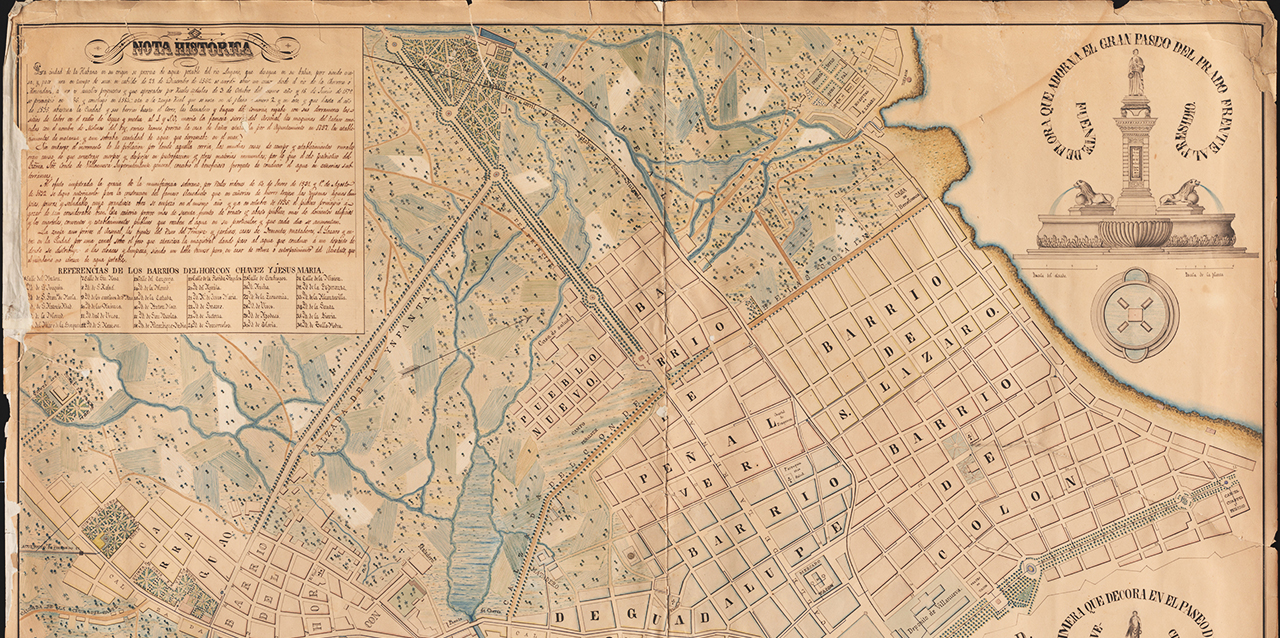Study shows long-standing links among disease, race, class, infrastructure

LAWRENCE — Links — both real and imagined — between race and disease are far older than the COVID-19 pandemic. A University of Kansas researcher says her new study of a 19th century Cuban aqueduct project during a cholera outbreak proves this, first in the way poor people of color were looked down upon as vectors of disease spread and then in how they were victimized by “infrastructural violence.”
Ninel Valderrama Negrón, assistant professor in KU’s Department of Spanish & Portuguese, and her former graduate student Riya Mohan, now the Margolis Health Policy Scholar at Duke University, co-wrote the article “The Impact of the 1833 Cholera Epidemic on Havana’s Vulnerable Populations and Urban Landscape,” published in the journal Peripherica — A Journal of Social, Cultural, and Literary History.
“The structural violence made evident (here) ... makes analysis of past societies, through the lens of race, gender and class, vital for the creation of policy,” the authors write.
The article examines a series of 19th century records, matching up health data with information about the 1831-1835 construction of the Fernando VII Aqueduct — which complemented the older aqueduct called the Zanja Real, completed in 1592 — that brought water from the outskirts to the edge of the walled old city of Havana. That was where upper-class types had already fled from inside the walls when they thought cholera was spread through the air. No one knew it was a waterborne disease until 1854.
Valderama said the documents she studied clearly show that not only did the extension of the aqueduct destroy an Afro-Cuban neighborhood near the port, but when completed it provided far more taps, per capita, to the neighborhoods of wealthy, light-skinned colonial Spaniards than to Cubans of color.
“Infrastructure is invisible, but it governs our daily lives in ways we don't realize until something goes wrong,” Valderrama said. “But it's always there, and it's always dividing people in ways we need to pay more attention to.”
Other contemporaneous official documents, held at Duke University’s Rubenstein Library, Spain's National Archives and its Military Archive in Madrid, contained detailed information about the race, gender and class of the victims of the cholera epidemic at the time, the KU researcher said. They show, statistically speaking, that the poor, Black and mixed-race female population bore the brunt.
“In this epidemic, there were hospitals in wealthy neighborhoods where there were 10 patients for every doctor,” Valderrama said, “and in the Black neighborhood, it was 500 patients for one doctor. So that is how infrastructure can be violent ... not only water infrastructure, but also medical infrastructure.”
Valderrama said she hopes to turn this research into a public-facing humanities project with a web-based interface that shows visually and easily the links between race, class, infrastructure and disease.
“This project began during the COVID pandemic,” Valderrama said. “My partner is of Asian descent, so she was suffering all the rhetoric about illness and race related to that. She really felt it that it was necessary not only to be an article, but to be also a public way of showing that these have been around for a long time.”